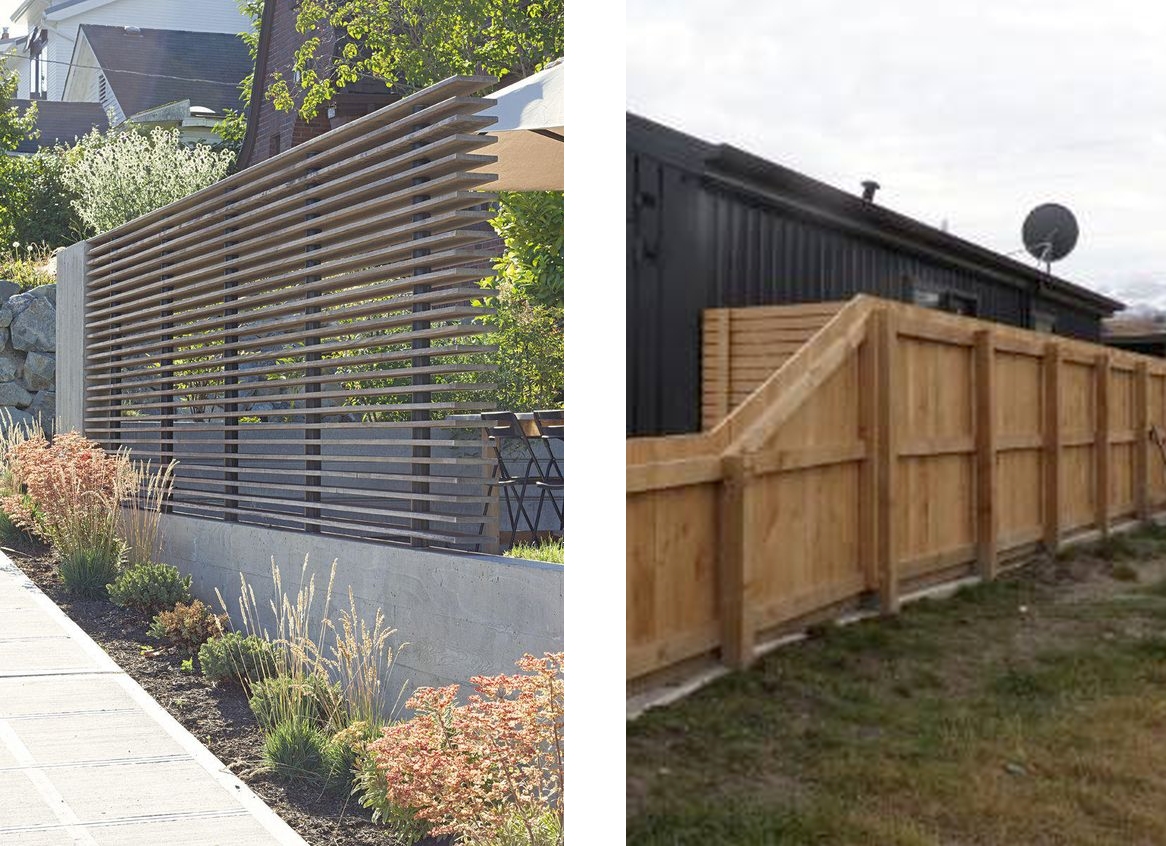Fences?
This may seem an odd thing for an architect to write about, but I think fences are long overdue for some attention. They are usually the least thought about structures on your property, and yet are often visually very obtrusive and functionally almost worse than useless, needlessly eroding the amenity and value of what for most people is their largest investment.
Badly considered fences are found surrounding nearly all New Zealand suburban properties. Often as not, when you buy a section any fences have already been built by the original property or subdivision developer, and were likely the cheapest that money could buy. The main purpose of such readymade fencing is as a marketing shortcut allowing prospective buyers to tick ‘security’, ‘privacy’, and ‘shelter’ as features offered when comparing sections. Few buyers stop to consider whether this is actually true, or even relevant. Most suburban fencing actually performs quite poorly at even these few tickbox tasks, creating unnecessary compromises that are often worse than the problems they supposedly solve:
Poor Security – Unless you want to live behind razor wire, most suburban fencing provides little meaningful security, and if anything actually creates a better opportunity for thieves and other home invaders to attack you or your property in privacy.
Poor quality of Privacy – Yes, blank, tall and unrelieved expanses of fencing certainly can give you a bleak sort of privacy, in much the same way as a prison exercise yard does – by cutting you off completely from the outside world. This kind of privacy is achieved at the expense of creating a strongly anti-social ‘keep away’ message to the whole neighbourhood, destroying valuable opportunities for stimulating transitions from public to private space, for chance conversations with neighbours, and eroding away any community spirit, engagement and friendliness between neighbours in the area, and sending a subliminal signal to anyone visiting (or thinking of buying!) that yours is a dangerous and unpleasant neighbourhood, requiring defensive barricades.
Poor Shelter – Wind tunnel testing confirms that the typical solid timber fence styles most often used in New Zealand are actually quite poor at providing shelter from the wind. Apart from a narrow sheltered strip just inside the fence, they deliver very little shelter and can actually worsen wind turbulence experienced just a few meters downwind. They are also more vulnerable than other approaches to slowly tilting over under prevailing wind pressure (typically resulting in the ‘weaving’ effect often seen with some sections of fence tilting faster than others) or even being completely blown over in a good storm.
 BUT NO NEED TO DESPAIR! Fencing really doesn’t have to sabotage your property investment. Here are 12 tips you can follow that should reduce or completely eliminate the adverse impacts of fencing, while still achieving all the privacy, shelter and security to outdoor spaces that you need:
BUT NO NEED TO DESPAIR! Fencing really doesn’t have to sabotage your property investment. Here are 12 tips you can follow that should reduce or completely eliminate the adverse impacts of fencing, while still achieving all the privacy, shelter and security to outdoor spaces that you need:
Tip 1: Ensure you really do need a fence.
Many homeowners put up fences without really thinking it through. Perhaps they do it because that is just what everyone else does, or perhaps they see it as an easy way to ‘improve’ property value at low cost, or just as a fun DIY opportunity. If this sounds like you, you may be throwing your money away.
- Is the neighbourhood actually improved, or is it or worsened when people chop it up into little walled fiefdoms? I would suggest fencing more often than not eliminates any sense of spaciousness and flow, as well as sunlight and views, and it is certainly not a very neighbourly gesture.
- Would it create better property value and amenity for you and your neighbours if you had more open and park-like surroundings, especially around the front half of your properties?
- How much more often will you really use your front yard after you put that front fence up? Probably very little in most cases, if you are honest, and maybe even less often than you did before, given that your front yard just became gloomier than it was, and lost its outlook. And now you have yet another feature that you have to run the weed whacker along every time you mow the lawns!
- And what bizarre and secretive activities will you be doing out doors, on all parts of your property, that require you to fence right along every boundary line?
- Do you really think so poorly of the neighbours that you need to completely wall them out? Just how interesting do you think you are, that you think strangers will really want to peep in through your windows? Do you honestly think a fence would stop anyone committed to trespassing (or worse) on your property, or would it actually encourage them, by giving them more privacy?
If you decide you must have fencing, perhaps you could consider shorter, higher quality fences, framing certain carefully crafted private outdoor spaces within a wider open landscaping concept?
Tip 2: Know where (and if) you can legally build your fences.
Check with your local council about the rules applying in your area. These may govern the height, maximum length, colours, materials and construction of any fencing currently allowed. Rules can change, so be aware that current rules may not correspond to what has previously been built nearby. You may also be bound by covenants on your land title, or other subdivision rules limiting what and where you can build. Some high-end subdivisions prohibit fencing entirely as a condition of sale.
If you are planning to fence along a boundary, double check your exact boundary location, and that your boundary pegs are in place – do not just rely on existing old fences to mark boundaries, as these are notorious for being in the wrong place. Getting this wrong now could prove very stressful and expensive for you later. You can always get a surveyor to reinstate any missing pegs.
Tip 3: Integrate the design of your fence with the design of your house.
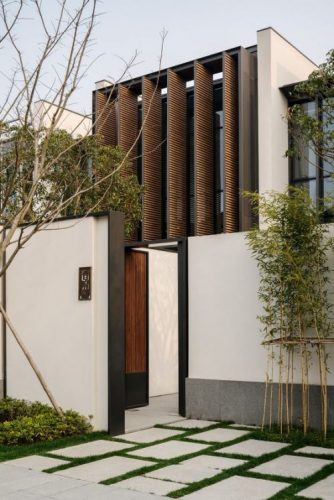

Considering both house and hard landscaping (paving and fencing) as parts of a coherent and well-integrated whole will very much enhance the experience of anyone approaching or moving through your house and garden, and ensure that no part feels like a clumsy afterthought. Here are a few basic design strategies that architects often use:
- Ensure the colours and materials and textures of your fence or garden walls harmonise with the claddings of your house.
- Treat garden walls as part of the house itself – for example, garden walls can define outdoor ‘rooms’ that flow from one to another. Interior walls that pass out through full-height glazing to become garden walls can create wonderful combined indoor-outdoor view shafts and spaces. You can also extend suitable floor finishes from inside to outside, further strengthening the visual connection and indoor-outdoor flow.
- Make garden walls visually thick and sturdy rather than thin and flimsy looking where you want to create a feeling of solidity, cosiness, quality and permanence. Do the opposite, and use an open paling or slat design for example, where the wall needs to feel ‘light’ and to filter but visually remain connected with the world beyond.
- Ensure fences are carefully planned to define smaller discrete outdoor living spaces within the section, rather than running them as a ‘dumb’ perimeter around the whole site.
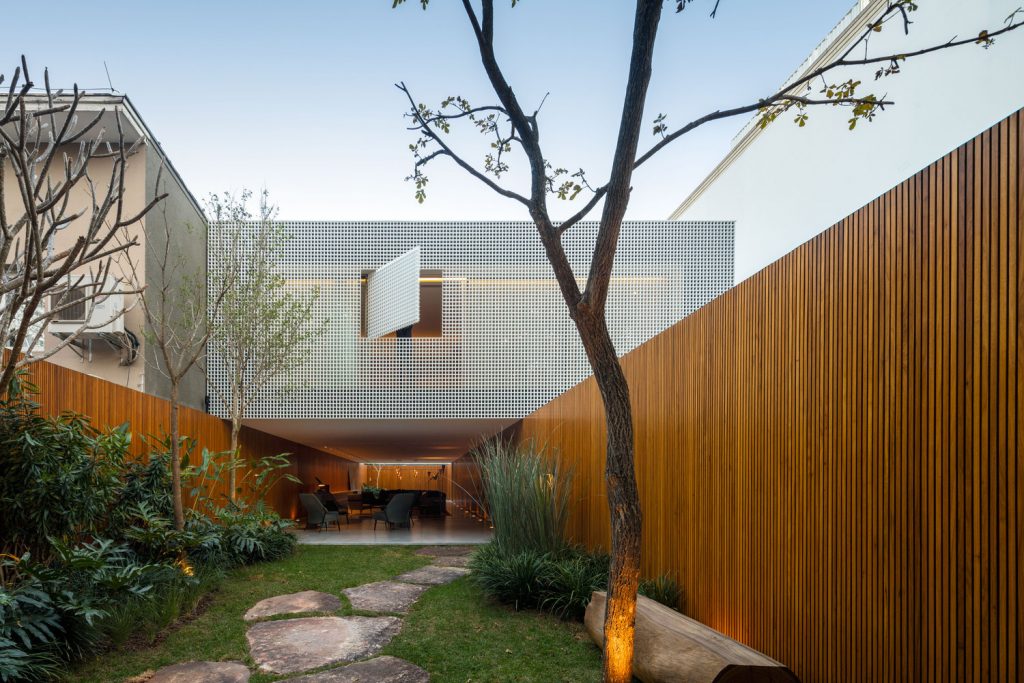
Tip 4: Minimise or simply eliminate boundary fencing wherever possible.
To be fair eliminating boundary fencing is made more difficult than it should be by NZ legislation (Where a fence is permitted, the Fencing Act compels both neighbours to share the cost of a basic fence, even if only one neighbour wants it).
You may want to select your new section from a subdivision where there is a ‘no boundary fences’ covenant, or where council planning rules limit boundary fences, because otherwise, even if you do the right thing with your own fencing, there is no guarantee that some obnoxious fence – loving neighbour won’t spoil things for you and the neighbourhood.
Tip 5: Avoid long unbroken fences
Particularly try to avoid long street facing fences that degrade the amenity people passing outside your fence will experience in relation to your property, and that will make the street feel sterile and unloved.


There is no question that ‘Kiwi-default’ options will significantly degrade your neighbourhood, and the kerb appeal of your property, and will be experienced by others as pretty defensive and antisocial.
If you really want every part of your property to be private, and would rather not think about how your choices affect others or the amenity of your street, perhaps you should live in a rural area, far from everyone else?.
If you must have a long fence, you could at least make it sculptural, or integrate points of interest along its length, with things like curves in plan, or steps in and out for planters and trees along the boundary.
Even where a fence really is required, it seldom needs to be solid along its entire length. Solid areas framing more open areas of fencing (e.g. consisting of vertical bars or slats) with greenery visible beyond, or planted alcoves and steps in plan can add life and interest to the fence, and make your property feel more generous and open, and less like Fort Knox.

Tip 6: Avoid continuous fencing along sloping ground if possible
Employ stepped segments of level fencing instead of sloping topped fencing, or even better, reduce the length enclosed and make your landscaping design work better with the position of your house and any outbuildings, such that stepping (or sloping) fences are not required at all.

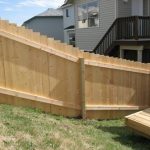
Tip 7: Avoid building up soil against timber fencing
 Timber fences never look very good or perform well as retaining walls for long. Timber in ground contact will soak up moisture, causing any finish to degrade even if the timber itself is ground treated. The timber is also likely to warp and bulge and grow mossy over time. Timber fence rails and palings, just like the weatherboards on a house, need to be kept well clear of any dirt and leaf litter build up. Never EVER raise garden beds up along timber fence lines, or your house.
Timber fences never look very good or perform well as retaining walls for long. Timber in ground contact will soak up moisture, causing any finish to degrade even if the timber itself is ground treated. The timber is also likely to warp and bulge and grow mossy over time. Timber fence rails and palings, just like the weatherboards on a house, need to be kept well clear of any dirt and leaf litter build up. Never EVER raise garden beds up along timber fence lines, or your house.
Tip 8: Be wary of picket fences and other low fencing types

A low but functional fence to keep livestock in a paddock is one thing, but in the suburbs, unless you happen to live in a neighbourhood full of Victorian villas and are striving for historical consistency, chopping up the streetscape with low picket fences will add little value.
In fact, unless the circumstances and the match with the house and streetscape is just right, picket fences (and their contemporary equivalents) nearly always come across as a bit pretentious – serving no functional purpose, they reflect mostly the social anxieties of their owners.
Any front fence, tall or short, can also make your street frontage look meaner than it needs to, by separating it from the landscaping on your road reserve (which you could otherwise visually claim as your own), so any reason you can find to avoid this pointless expense is a generally a good one.
Have I offended anyone yet?
Tip 9: Avoid chopping and changing fencing styles and heights from one boundary to the next
Especially avoid changing styles if the fences touch. As people move around, any unplanned discrepancies from one fence to the next become quickly evident, subconsciously informing a visitor’s impression about your concern for detail (or lack of it!). Fences don’t always have to match, but if no thought is given to how you articulate the junction and relationship between two adjacent fencing styles, the result is usually a just clumsy visual mess.
Tip 10: Avoid thin looking free-standing fence ends.
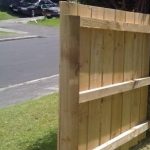
Leaving fence ends visible exposes how your fence was constructed, in more ways than one; expressing to the world whether your fences (and your property) are cheap and lacking in substance, or solid, enduring and of good quality. You could swap the fence for a thicker garden wall, use thicker than normal fence posts (not just at the ends) or at the very least form a return at fence ends to address adverse ‘rickety fence’ perceptions.
Design your fence with the end view in mind!
Tip 11: Don't run fences alongside other structures

Fences always look bad and poorly thought through when running close alongside other structures such as sheds, garages or other fences. Functionally this is a double up, and it tends to feel like a clumsy blunder.
When a fence would otherwise pass close alongside an outbuilding for any reason, you could better resolve this aesthetically by simply joining the fence to each end of the outbuilding, and omitting the overlap. If the outbuilding is set back a little from the fence line, you can resolve this by positively turning the fence ends to meet the outbuilding.
The visual discord introduced by the outbuilding placed beside a fence be changed from an eyesore to an asset, breaking up the fence line in an aesthetically intentional way, providing a deliberate contrast for visual interest.
In fairness, this requires that you actually speak to your neighbours, and collaborate with them to maximise your mutual amenity (and possibly even save a bit of money).
Who knows where discussing the benefits of good design with your neighbours might lead?
If designing your fence for a more elegant and sympathetic relationship with the neighbour’s outbuilding does not work for you, best to just ensure any fence is higher than the outbuilding, or does not go near the outbuilding in the first place. Certainly, no one likes looking at the back end of an outbuilding (or other structure) poking above a fence that it was pushed hard up against.
Tip 12: Avoid selfish fence design details
A very common situation is where one side of a wooden fence ends up being uglier than the other, with inelegant exposed rails and posts facing one way, and a homogeneous wall of planks facing the other way (this describes most DIY and developer fencing in New Zealand, unfortunately). The question of ‘who gets to look at the ugly side’ can become a source of resentment, festering for years between neighbours.
Any suggestion of meanness and ugliness is easily avoided with the right choice of design and materials.
A stone, brick or plastered concrete garden wall can look solid and sculptural, while well detailed timber fencing (that looks good from both sides) reveals you have a concern for craftsmanship and texture. The right plan layout (not just straight lines along the full length of your boundary), with interesting interventions and planting both sides show that you do care about other what people have to look at each day. The right placement and ratio of gaps vs solid structure can improve visual amenity and wind shelter performance as well.
Here are a few design ideas for you that don’t look quite as cheap and inept as most kiwi fences:
Take home message
In a nutshell, you should remember that fences can easily dominate the appearance and amenity of your property, and are very much like billboards that express things about you and your values to the world, whether you intend them to or not.
So easy to get wrong, poorly designed fences can be socially isolating for you and your family, reveal less than flattering things about your design sensitivity and civic pride, create wasted, unloved, gloomy and seldom visited alleyway spaces beside your house, reduce sunlight and amenity to your outdoor spaces, as well as potentially making for needlessly obstructed and even quite depressing views from your home.
If you have a section with existing ‘typical’ fencing to contend with, then your options are going to be more constrained than in an unfenced section where your options are open and the neighbours are decent, or where there are design-friendly subdivision or planning rules to limit the damage that fencing causes to urban environments – but even so, the more you can do to correct what you find, the more you can lift your property out of the thoughtless mediocrity that blights most suburbs.
If you don’t have an architect or landscaper designing your fencing, at the very least you will need to consult your local authority and incorporate their guidance as to what you can and can’t build in your particular context. Achieving council compliance as a bare minimum will keep you out of trouble, though on its own obviously provides no certainty at all as to the performance or visual amenity generated by your fencing choices.
A good outcome is definitely within reach though – if you are alert to the pitfalls and are willing to apply to the design of your fencing every bit as much care and sensitivity as you would apply to the design of your house.

